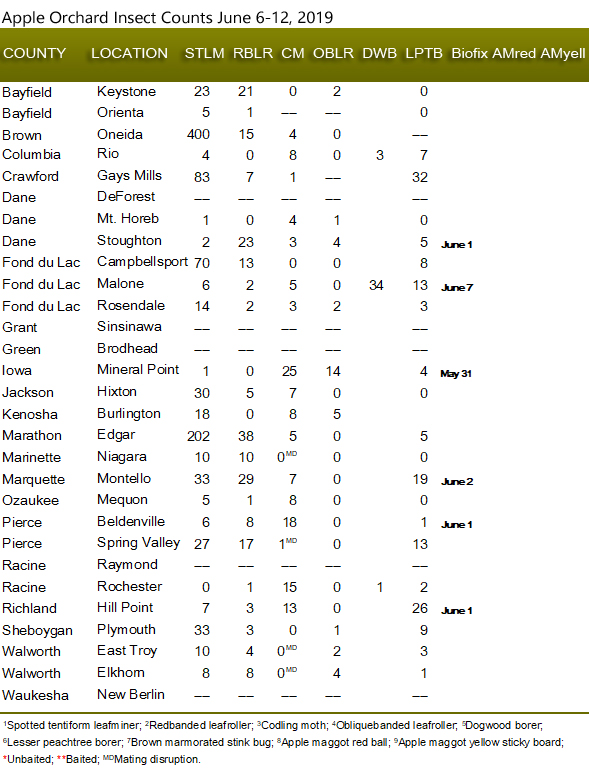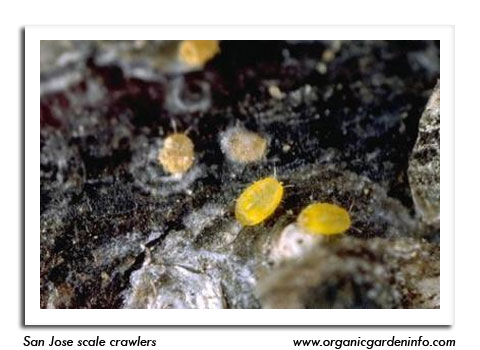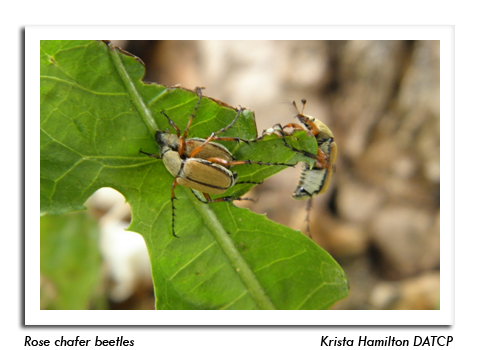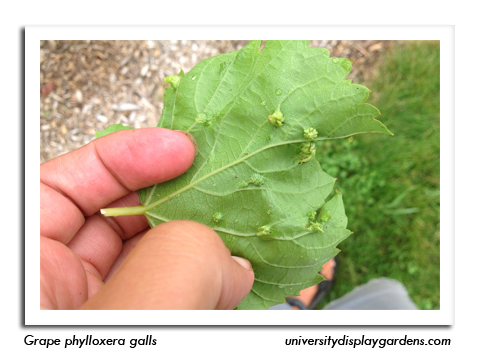
 |
|
|
Fruits
Volume 64 Number 7 Date 06/13/2019 CODLING MOTH - The spring flight continued for the second week, with 10 monitoring locations registering economic counts of five or more moths per trap. Egg deposition has intensified and growers should begin preparations for initial CM treatments. Apple orchards that established the biofix from May 31-June 1 are likely to accumulate 350 degree days (modified base 50°F) from the biofix date around June 20-24. This is the window during which insecticidal controls should be applied. SAN JOSE SCALE - A few more days remain for apple growers to tape scaffold branches to monitor for crawlers. Concentrating the tape on younger limbs (2-3 inches in diameter) in blocks with a history of SJS damage is advised. A 10x hand lens is required to view the oval, bright-yellow crawlers. A capture of 10-15 crawlers in a few days or 10 crawlers on one tape may warrant control. ROSE CHAFER - These tan beetles with orange-brown spiny legs are expected to appear in vineyards and orchards in the week ahead. Scouting twice weekly is advised for vineyards on sandy soils and those with a history of rose chafer problems once the first beetle is observed. An average of two beetles per vine has been suggested as the basis for initiating controls, although the feeding period is usually brief (<3 weeks) and the beetles usually disappear by July without causing permanent damage. OBLIQUEBANDED LEAFROLLER - Apple growers planning reduce the number of codling moth larvicide treatments this spring should set additional OBLR traps to determine the potential for problems by second-generation larvae at harvest. There is no established threshold for OBLR based on trap counts, but according to John Aue of Threshold IPM Services, an OBLR larvicide may be needed if trap counts exceed 50 moths per week. TARNISHED PLANT BUG - Nymph production has started in the south-central and southwestern counties. Strawberry plants beginning to bloom should be sampled once a week for both adults and nymphs. Controlling the smallest nymph stages is most effective. The economic threshold for this insect in strawberries is four adults per 20 sweeps at first flower bud formation or one nymph in four flower clusters. GRAPE PHYLLOXERA - The appearance of leaf galls suggests that monitoring for egg hatch should begin. Control of the first generation is usually ineffective once the galls have formed, but scouting for the mobile crawlers will help to determine the timing and need for management of the second and third generations later this season. As is the case with San Jose scale, a 10x hand lens is required to view the crawlers. -- Krista Hamilton, DATCP Entomologist 





|
|
|